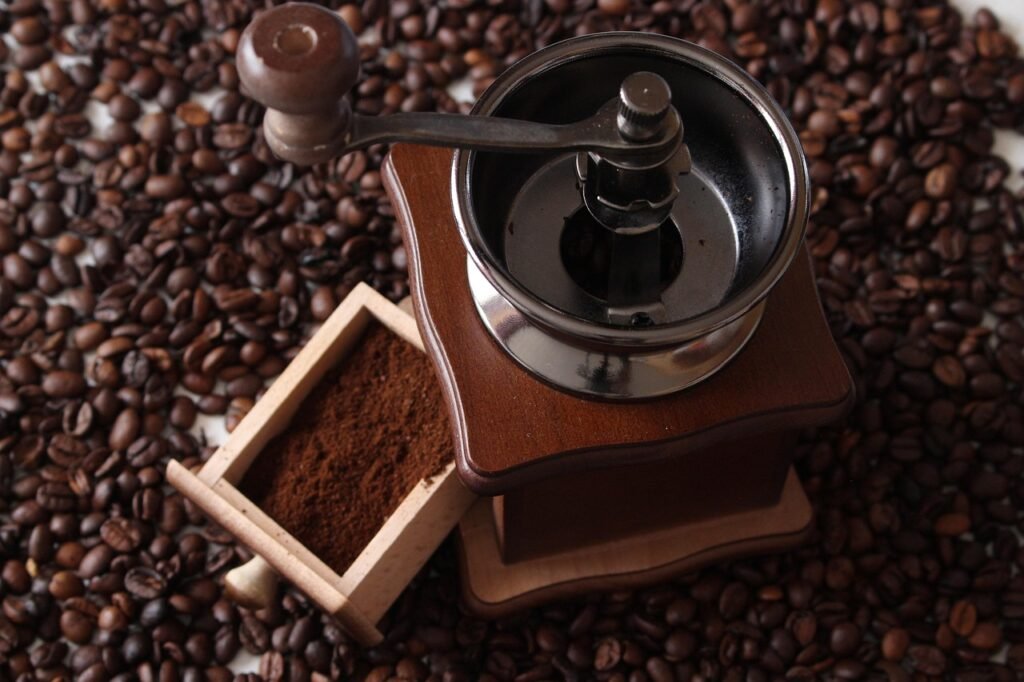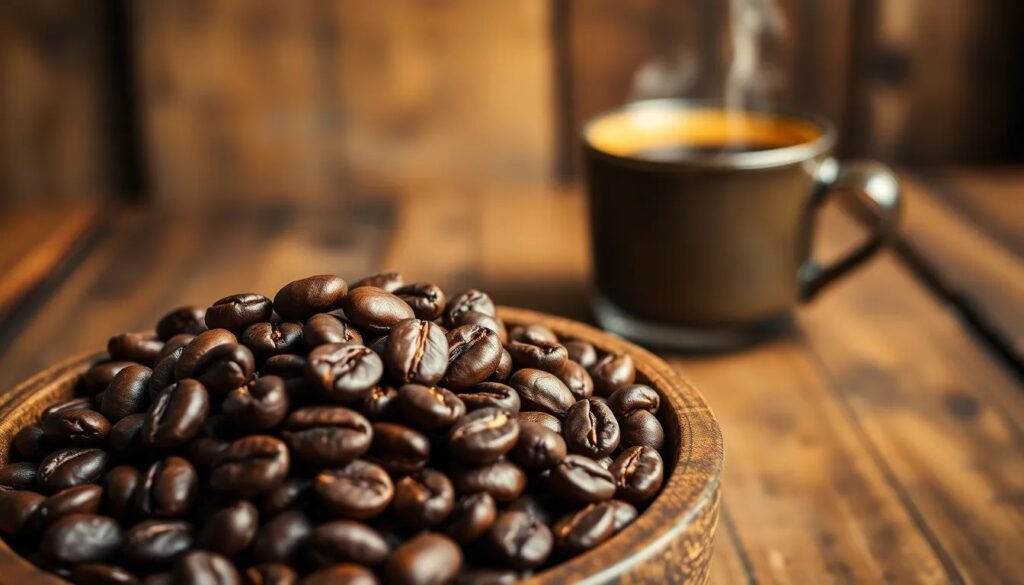Ever taken a sip of coffee only to be greeted by bitterness or blandness? It doesn’t have to be this way. By mastering a few key techniques, you can elevate your coffee to professional-grade quality, right at home.
This guide delves into selecting top-tier beans, perfecting your brewing method, ensuring optimal water quality and temperature, using flavorful additives, troubleshooting common taste issues, and answering the question of how to make coffee taste good. Whether you’re a coffee aficionado or a casual drinker, these actionable tips will transform your morning ritual into a delightful experience.
Choosing the Best Coffee Beans for Superior Flavor
Choosing specialty coffee beans is crucial for superior coffee flavor. Certified Quality Graders score these beans 80 points or higher on a 100-point scale. This grading ensures the selection of only high-quality, defect-free beans. Specialty coffee is the pinnacle of quality, delivering unmatched taste and aroma.
Signature Blends and Single Origin coffees also enhance flavor. Signature Blends combine beans from various regions to create a balanced, unique profile. Single Origin coffees highlight the distinct characteristics of a specific area. Additionally, award-winning coffees from high-end, limited-edition lots and auctions offer exclusive taste experiences.
To keep your coffee beans fresh and flavorful, follow these storage tips:
- Store in an airtight container
- Keep away from direct sunlight
- Avoid heat sources
- Use beans within four weeks of roasting
- Grind beans just before brewing
Brewing Techniques to Enhance Coffee Taste at Home

Manual coffee makers are gaining popularity. These devices offer precise control over water temperature, brewing time, and grind size. This precision helps extract the best flavors, making manual coffee makers a favorite among enthusiasts.
The coffee-to-water ratio is essential for balanced flavor. The golden ratio, often 1:15 to 1:17 (one part coffee to 15-17 parts water), ensures a balanced taste. Adjust this ratio to improve flavor. If your coffee tastes bitter, use less coffee or more water. Conversely, if it’s weak, increase the coffee or reduce water.
Understanding the stages of coffee extraction can improve your brew. Coffee extraction occurs in phases: acids, sugars, oils, then solids. Control extraction time to balance these flavors and avoid an overly acidic or bitter cup. Under-extracting (short brew time) can result in sourness, while over-extracting (long brew time) can make it bitter. Fine-tuning grind size and brew time helps achieve perfect extraction balance.
Popular Brewing Methods
Pour-over, French press, and cold brew are three popular methods to enhance coffee flavor.
- Pour-over: Pour hot water over coffee grounds in a filter, allowing precise control over water flow and extraction time. Produces a clean and bright cup.
- French press: Steep coffee grounds in hot water before pressing them through a metal filter, resulting in a full-bodied, rich flavor.
- Cold brew: Steep coffee grounds in cold water for an extended period, resulting in a smooth, less acidic beverage.
The Golden Coffee-to-Water Ratio
The ideal coffee-to-water ratio is vital for balanced flavor. The general guideline is 1:15 to 1:17.
- 1:15 ratio: Use 1 gram of coffee for every 15 grams of water for a stronger brew.
- 1:17 ratio: Use 1 gram of coffee for every 17 grams of water for a lighter brew.
Adjust the ratio based on your taste preference and experiment to find the perfect balance.
Water Quality and Temperature: Key Factors in Coffee Flavor
Water quality significantly impacts coffee taste since coffee is 98% water. Use filtered water to remove impurities, such as chlorine and minerals, that can alter your brew’s flavor. This preserves the natural taste of the beans.
The ideal water temperature for brewing coffee is 195°F. This allows optimal extraction of flavors without causing bitterness. Boiling water, at 212°F, can scorch coffee grounds, resulting in a bitter taste. Avoid using boiling water directly on the coffee.
Enhancing Coffee Flavor with Additives

Creamer adds creamy texture and sweetness, balancing coffee’s natural bitterness. For those avoiding dairy or seeking new flavors, many alternatives exist. You can learn how to make coffee taste good with creamer.
Different additives can elevate coffee flavor. Milk provides richness and enhances sweetness. Non-dairy options like almond, oat, and coconut milk offer similar richness for those who prefer plant-based alternatives.
Popular additives and their benefits:
- Milk: Adds creamy texture and natural sweetness.
- Non-dairy milk (almond, oat, coconut): Provides richness without dairy.
- Coconut oil: Adds tropical aroma, freshness, and natural sweetness.
- Cinnamon: Enhances flavor with warmth and depth.
- Vanilla extract: Infuses coffee with a sweet aroma.
- Honey: Natural sweetener adding depth of flavor.
- Maple syrup: Rich aroma and natural sweetness.
- Cocoa powder: Imparts chocolatey flavor, creating a mocha-like beverage.
Troubleshooting and Fixing Common Coffee Taste Issues
Bad coffee can ruin your morning, but you can fix common taste issues like bitterness and weak flavor. Avoid bitter coffee by adding a pinch of salt to the grounds. Salt’s sodium ions neutralize bitterness, making coffee smoother.
Another issue is using stale beans. Freshly roasted beans offer peak flavor and aroma due to more pronounced natural oils and sugars. Grinding beans just before brewing enhances consistency and freshness. Pre-ground coffee quickly loses quality due to oxidation, but fresh grounds retain aromatic compounds and essential oils for a robust cup.
Improving coffee flavor also involves adjusting the coffee-to-water ratio. The golden ratio, typically 1:15 to 1:17 (one part coffee to 15-17 parts water), helps achieve balanced flavor. If your coffee tastes weak, increase the coffee or reduce the water. If it’s too strong, do the opposite. Experimenting with different roasts and blends can help you find your preferred flavor profile and learn how to make coffee taste good at home.
Tips to fix common coffee taste issues:
- Add a pinch of salt to reduce bitterness
- Use freshly roasted beans
- Grind your own beans for consistency
- Adjust the coffee-to-water ratio
- Experiment with different roasts and blends
- Use filtered water to avoid impurities
Final Words
Discovering how to make coffee taste good involves choosing high-quality beans, mastering brewing techniques, considering water quality, using flavor-enhancing additives, and troubleshooting common issues.
Selecting specialty beans, paying attention to the coffee-to-water ratio, and understanding coffee extraction stages are crucial steps. Quality water and temperature management enhance the flavor, while creative additives offer additional flavor dimensions.
By applying these strategies, you can significantly improve your coffee experience at home. Enjoy the journey to a perfectly balanced cup of coffee.
FAQs
How to make coffee taste good when you hate it?
To make coffee taste good if you hate it, consider adding milk, non-dairy milk, or sweeteners like honey or maple syrup. Experimenting with different additives can help find a flavor you enjoy.
How to make coffee taste less bitter?
To reduce bitterness in coffee, use freshly roasted beans and grind them just before brewing. Adjust the coffee-to-water ratio and avoid using boiling water, which can cause bitterness.
How to make coffee taste good at home?
To make coffee taste good at home, use high-quality specialty beans, grind just before brewing, and experiment with different brewing methods, such as pour-over or French press, to enhance flavor.
How to make coffee taste sweet?
To make coffee taste sweet, add natural sweeteners like honey, maple syrup, or vanilla extract. These additives can infuse sweetness and enhance the overall flavor profile.
How to make coffee taste good without creamer?
To improve coffee taste without creamer, try alternatives like milk, non-dairy milk, coconut oil, or cinnamon. These additives provide richness and flavor without the need for creamer.













